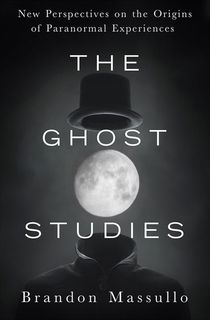It's happened to all of us: you're walking down a dark hallway when suddenly you feel a chill run down your spine and all your hair stands on end. It could just be an old house, but something in your gut tells you you're not alone…
The existence of ghosts is hotly contested. Without solid, indisputable proof, how can we definitively say that spirits exist beyond the body?
However, while the study of ghosts remains a pseudoscience, it's also true that depictions of ghosts exist across all cultures.
So is it simply human nature to attribute our intangible fears to an explicable entity, or is there more in this world than we are currently capable of defining with hard facts?
There are indeed more questions than answers here. But perhaps we can help you get started with this beginner's guide to ghosts.
What is a ghost?
There is not one concrete answer as to what a ghost actually is, but there are a few theories at the forefront.
Most commonly accepted is the theory that ghosts are the spirits of the dead who are struggling to cross over into the afterlife. They may be tied to their old life due to unfinished business, such as love or injustice.
Another popular theory is that ghosts are actually just a glimpse or impression from the past. A variation on this theory asserts that such sightings are a look into another dimension.
These definitions are similar in that they both offer a glance at something we feel we're not supposed to see. But if they're so wholly different at their core, how can we lump both theories under the category of “ghost?”
Be it an unsettled spirit or a bleed-over from another time, both phenomena are marked primarily by the appearance of an apparition.
These are entities that are incorporeal, often transparent, and sometimes amorphous.

Ghosts can also appear to people through other senses, such as sounds (laughter, footsteps, disembodied voices), smells (gunpowder, perfume, sea salt), and sensations (an increase or decrease in temperature).
In strong hauntings, there are also reports of ghosts being able to move objects around the room.
It is believed—though not scientifically substantiated—that ghosts are made up of a form of energy. The energy in ghosts is unlike others, such as electrical or thermal energy, but rather said to be its own unique substance.
The idea that ghosts consist of energy is based on physics. The physical law of conservation of energy states that energy cannot be created nor destroyed, only changed.
As such, it is thought that ghosts are the as-yet undefined transformation of energy from a human body.
What are the five types of ghosts?
As the wealth of ghost movies might imply, there are a lot of different kinds of ghosts. There's a big difference between Casper the Friendly Ghost and Poltergeist, and you're going to want to know what you're getting into.
Of all the chilling variations, experts have whittled them down to five major types.
Interactive Personality Ghosts
According to experts, the most common ghosts individuals run into are the interactive personality ghosts. These ghosts maintain a likeness and behavior similar to that of when they were alive.
These ghosts may be a family member, an historical figure, or perhaps a larger-than-life local legend. Whether or not they're friendly in the afterlife is dependent on how they acted while alive—or perhaps how they died.
An interactive personality ghost can show themselves to a person in any number of ways. Many of them allow themselves to be at least partially seen, or they can speak, communicate through noises, or even cause evocative odors.
Beyond behaving like they did when they were alive, it's believed they also feel emotions in the same way, too. If they're making their presence known, it's either because they feel you need them in some way, or they have something important they need you to see, hear, or experience.
Ectoplasm/Ecto-Mist Ghosts

Ectoplasm—otherwise known as ecto-mist—is a ghostly energy that presents itself as a fog or…well, mist. This vaporous cloud hovers several feet off the ground, and can either be seen standing still or swirling in quick movements.
Ecto-mist may exist on its own, or it may develop more fully into a complete apparition. This paranormal fog is often found outside in graveyards and battlefields.
Poltergeists
Most people have heard of a poltergeist—perhaps popularized by the famous 1982 horror film. But did you know it's actually one of the rarest kinds of hauntings?
The translation of the word “poltergeist” is “noisy ghost”—referring to the energy's power to move objects, create noises, or otherwise manipulate their physical, environment.
These ghosts can commonly cause loud knocking, slam doors, flicker lights on and off, and in extreme cases, set things ablaze.
What makes poltergeists so frightening is that these hauntings are a slow burn. While the disturbance may start out very mild, the intensity grows steadily over time—and there's no way of knowing when it will reach its peak.
There a plenty of times that a poltergeist unfolds in a harmless manner. But the times in which it grows to a dangerous level are very serious.
Experts say that poltergeists come from a mass of energy that is unknowingly controlled by a living being.
Orb Ghosts
Orb ghosts present themselves as transparent spheres of light floating above the ground. These spirits are commonly seen in photographs, and as such are the most highly documented haunting.
It's said that these orbs are the incorporeal souls of humans or animals that are in the midst of travel. Taking on a circular shape is supposed to make movement smoother.
In pictures, these orbs are typically white or blue. For those lucky ghost hunters that capture orbs on video, you'll see that they zip by incredibly fast.
Funnel Ghosts
A funnel ghost—otherwise known as a vortex—is commonly tied to cold spots. These hauntings take on the shake of a spinning funnel, sort of like an invisible tornado or wisp of light.
You can find these funnel ghosts most frequently in homes or historical buildings. Experts think these funnels are a loved one popping in for a visit, or an old resident taking a stroll through their former home.
What are some specific cultural beliefs surrounding ghosts?
While ghosts are documented across all cultures, each culture has a specific set of superstitions and attitudes regarding spirits. Here are a few differences between certain cultures.
Ghosts in Egypt
Spirits were an essential part of ancient Egyptian religious practices. It was believed that the human soul had several different parts, all of which had distinct functions.
One such soul component was the “ka,” which was regarded as the life force. The ka was central to an individual's identity and continued to exist even after death, remaining in the burial place and consuming offerings as sustenance.
Ancient Egyptians subscribed to the belief that the souls of the dead must undergo a difficult journey through the realm of the dead—Duat—in order to reach the afterlife. During this journey, obstacles were presented to them.
It was here that ghosts played a large role. In this instance, ghosts were the restless spirits of the dead who failed at completing their own journey, and as such were incapable of being at peace.
Called “akhu” or “ba,” these unsettled spirits were said to wander the earth and occasionally interact with the living. These souls could either bless or harm the living and the physical world, so it was important for ancient Egyptians to cultivate a good relationship with akhu.
To stay on good terms with the akhu, ancient Egyptians honored them with regular rituals. They provided offerings such as food, drink, and other goods to ensure the akhu were well taken care of in the afterlife.
Ancient Egyptians also believed that the dead could speak to them through dreams or visions. These communications were considered great guidance or warnings from the spirit world, and the living often sought out the counsel of ancestors who had passed on through oracles or dream incubation.
Ghosts in Celtic Ireland

Belief in the supernatural was at an all-time high in Celtic Ireland, lasting from roughly the 8th century BC to the 5th century AD. Among the vibrant folklore of the ancient Celts was a set of mythology touching upon ghosts.
Celtic folklore commonly calls ghosts “spirits” or “shades.” These spirits were regarded as the souls of the dead who had not yet moved on to the afterlife from the mortal realm.
Spirits could be staying behind for any number of reasons. It was believed, however, that these spirits had a connection to the living, and would even interact with them in some instances.
Most notable in the Celtic belief system was the concept of a “thin veil” or “thin places.” These areas divided the mortal and spirit realms, and were thought to be areas or periods of the year which were much less distinct in separating the boundaries.
Physical locations of thin places might include burial mounds or sacred sites. A periodical thin veil would occur on a day like Samhain, the Celtic New Year's Eve celebrated on October 31st.
The Celts believed that on Samhain the spirits of the dead would journey back to the mortal realm. As such, the living would perform rituals and leave behind offerings to honor them—traditions which eventually lead to the development of what we now know as Halloween.
In Celtic Ireland, ghosts were seen as restless or mischievous entities. They were thought to be able to communicate with the living through dreams, visions, or physical manifestations.
Ancient Celtic society found it very important to worship their ancestors, so a great amount of respect was given to the deceased.
Their acts of reverence saw that gravesites were rife with offerings, feasts were held in the dead's honor, and that guidance was often sought from spirits.
Ghosts in China
Ghosts have a vital role in Chinese folklore and spirituality. As in other cultures, ghosts are depicted as restless spirits of the deceased, but China has a variety of specific ghosts in their tradition.
Hungry ghosts are the spirits aimlessly wandering the earth, particularly during the seventh month of the lunar calendar, aptly known as the Ghost Month. These were the souls of the greedy and the selfish—souls who are now emaciated as they have been neglected by their descendants.
There are also ancestral spirits, which were very highly respected, as it was believed they watched over their living descendants. As ancestor worship is a core component in Chinese culture, offerings, and rituals are often performed to honor such sprits.
Another type of spirit is the malevolent ghost, which brings misfortune and harm to the living. These evil ghosts are the result of tragic or violent ends, and they may even have supernatural powers to wield in their hunt for revenge.
There are many more spirit types in Chinese tradition, coming together to form a vivid collection of legends.
How do you get rid of a ghost?
Whether a ghost is friendly or not, you may not be comfortable sharing the same space. So how do you get rid of a ghost?
According to the interview psychic Denise Guzzardo gave the Chicago Tribune, there are a number of simple ways you can oust a spirit from your house.
First and foremost, the best way to evict a ghost is by ignoring them. Think of ghosts like school bullies: the more attention you give them, the more power you give them.
It's best to find the place where the ghosts are most active, stand firm, and declare, “You are not welcome here.”
Then all you have to do is stop feeding their energy, and they will often take it upon themselves to leave.
If that doesn't work or you'd like to take on a more active role, you can try burning sage in every room to clear the space. Burning white candles can also bring good energy into your home.
To really clean the place up, bring in some white roses. These flowers will suck up all the spiritual activity in the home, then when they dry out, throw them away as soon as possible and rinse some salt down the drain to chase away the last of the absorbed energy,
Sprinkle some salt on your home's entrance to keep ghosts out in the first place.
It's best to do these rituals in the period between moon cycles. The two-week window between the full moon and the new moon eases how much work you have to put into the cleansing.
Of course, if none of this works, you could always call in a professional for a good ol' fashioned exorcism.
Want to learn even more about ghosts, spirits, and the strange an unexplained? Check out the books below!
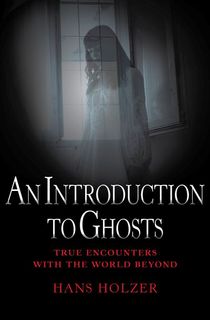
An Introduction to Ghosts
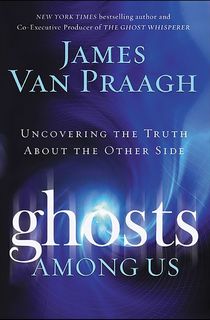
Ghosts Among Us
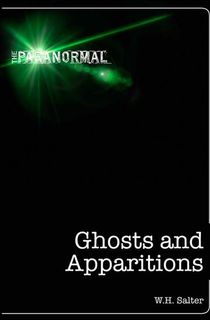
Ghosts and Apparitions
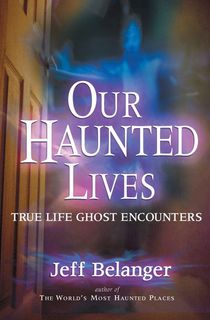
Our Haunted Lives
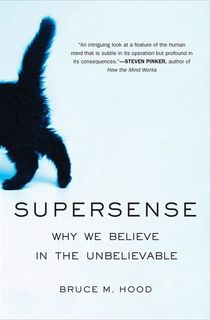
SuperSense
